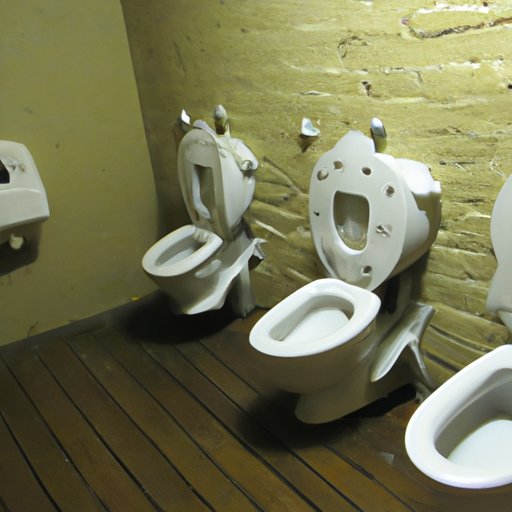Introduction
Indoor toilets are commonplace in most American homes today, but they haven’t always been so common. From ancient times to modern day, the history of indoor toilets in America is an interesting one. This article will explore when indoor toilets became common in the U.S., as well as the impact they had on health and hygiene.

History of Indoor Toilets in America: From Ancient Times to Modern Day
The use of indoor toilets dates back thousands of years. In ancient Rome, for example, wealthy citizens used public latrines that were connected to a sewage system. In medieval Europe, chamber pots were used for personal sanitation, while outdoor privies were used by the lower classes. In the colonial era, early Americans used outhouses or shared privies.
By the 19th century, toilet technology had advanced significantly. The first flush toilet was invented in 1775 by Alexander Cummings, who patented the “water closet” in 1777. Other inventors soon improved upon this design, producing toilets with higher flushing power. By the late 1800s, indoor plumbing systems were becoming more popular, and toilets were being installed in some wealthier homes.
The Impact of Indoor Toilets on Health and Hygiene in the U.S.
The widespread adoption of indoor toilets had a major impact on health and hygiene in the United States. With the introduction of indoor plumbing, people no longer had to rely on outdoor privies, which often attracted disease-carrying insects. As a result, sanitation improved dramatically, leading to a decrease in illnesses such as cholera and typhoid fever.
In addition, indoor toilets allowed people to maintain a greater level of personal hygiene. People were able to bathe and wash their hands more frequently, reducing the risk of spreading germs. This improved hygiene helped to further reduce the incidence of communicable diseases.
A Timeline of When Indoor Toilets Became Common in American Homes
The timeline of when indoor toilets became common in American homes is as follows:
- 1800s: The first flush toilets were invented in the late 18th century, but it wasn’t until the mid-1800s that indoor plumbing systems began to become more widespread.
- 1900s: By the early 20th century, indoor toilets were becoming increasingly common in American homes. The advent of indoor plumbing made it easier for people to install toilets in their homes.
- 2000s: By the start of the 21st century, indoor toilets had become a standard fixture in most American homes.

How Technology Shaped the Popularity of Indoor Toilets in the U.S.
Technology played a major role in the popularization of indoor toilets in the U.S. Automated flushing systems, for example, made it easier for people to operate their toilets without having to manually flush them. Water-conserving fixtures, such as low-flow toilets, allowed people to conserve water while still enjoying the convenience of indoor toilets.

The Cultural Significance of Indoor Toilets in America
In addition to the practical benefits of indoor toilets, they also had a significant cultural impact. For many Americans, a home with indoor plumbing was seen as a symbol of social status. Furthermore, indoor toilets provided a sense of privacy and decency that was not present in outdoor privies.
Conclusion
Indoor toilets have been a part of American life for centuries, but their popularity has grown significantly over the past 200 years. From ancient times to modern day, technology has played a major role in the advancement of indoor toilets, from automated flushing systems to water-conserving fixtures. Indoor toilets have also been a source of status and privacy for many Americans, making them a long-term benefit to both health and hygiene.


